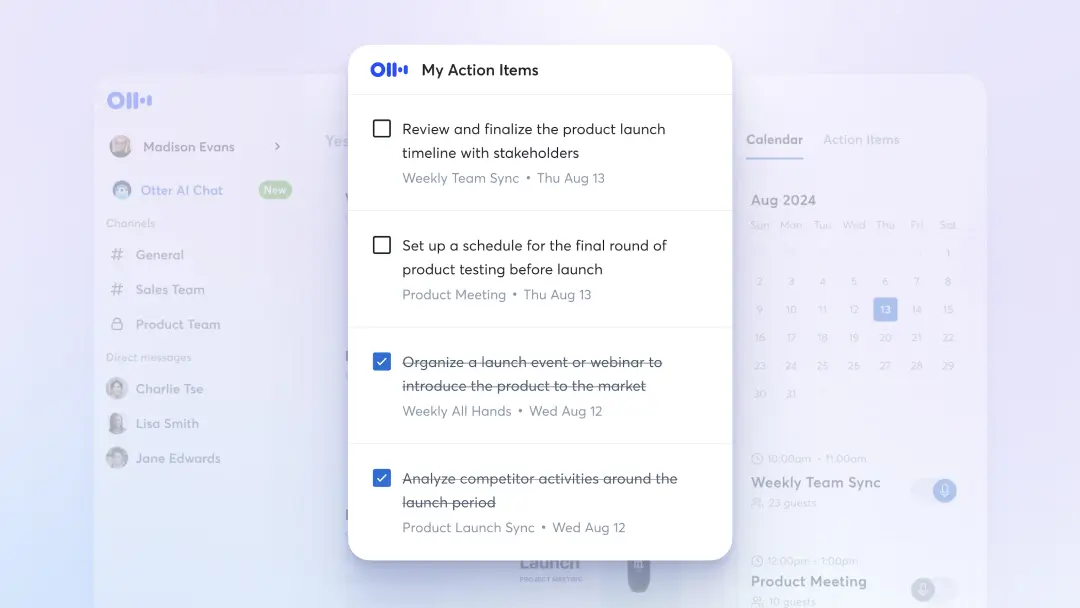How to Write a Great Board Meeting Agenda

Board meetings are important events that can help decision-makers understand where their company stands, as well as shape how it will move forward into the future. Since they occur so infrequently — often once every quarter or less — it’s vital that all participants come well-prepared so that they can make the most out of each opportunity.
As a result, part of preparing for a great board meeting is setting a clear, concise, and thorough board meeting agenda that will ensure everyone stays on track and that all-important points are discussed. To that end, we’ve put together this guide on how to write a great board meeting agenda so that you can empower board members to collaborate with ease and efficiency.
Take a look at these Shocking Meeting Statics that will make you think about having a great board meeting agenda.
You might also be interested: What Is Remote Communication: The Ultimate 2021 Guide
Step #1: Start With the Essentials
Although every board covers different things, and the structure of a board meeting can vary from company to company — even meeting to meeting — there are some formalities that are generally observed across all board meetings. Typically, these include:
- Call to Order: Formally begins the meeting by announcing whether there is a quorum (the requirements for a quorum are defined by each organization’s bylaws
- Roll Call: Notes who is in attendance
- Approval of Previous Minutes: Formally approves the minutes from the last meeting
- Approval of Agenda: Formally approves and agrees to continue with the agenda for the current meeting
- Adjournment: The official ending of the meeting
Since these are standard parts of practically all board meetings, they can provide a starting framework to build your agenda. After all, staring at a blank page is often the hardest part of starting any task. By simply getting something on paper in the form of these five items, you’ll break the inertia and get the ball rolling.
Step #2: Make a List of Everything the Board Should Cover
Once you have the required topics and rituals out of the way, you can start filling out the middle section of your agenda — the real meat of the meeting. Start by listing out everything that the board may wish to go over, in no particular order. You can add structure later on. For now, you just want to get everything down on paper.
- Common topics that are discussed during board meetings include:
- The company’s performance
- Challenges that face the organization
- Opportunities that are presenting themselves (such as potential partnerships and joint ventures)
- Plans for the future
Within these broad areas, there may be more specific subjects that should be discussed in greater detail. Unlike the first items that you wrote down on your agenda, these topics are up to the board’s discretion and can be tailored to meet the needs of your organization.
For example, instead of having “Company Performance” on your agenda, the board might also want to review staff reports or key performance indicators (KPIs). Similarly, instead of noting “Future Plans,” you might choose to hone in on several specific plans, like “Nike Merger,” “European Expansion,” etc.
As you prepare the schedule, you may need to solicit input from multiple stakeholders, depending on what your role is within the organization. Members of the c-suite, board members themselves, and other leaders can help you identify potential agenda items.

Step #3: Put the Meeting Items in Order
By this point, you should have a list of all the topics that could be covered during the meeting. Now, all you need to do is put them in the right order.
This step can be one of the most challenging parts of the meeting planning process. Even though it may seem like structure shouldn’t matter as long as you get through all the points by the end, it’s important to remember that board members are people — they have limited attention spans and varying learning styles just like everyone else. At the same time, individual meeting items may need more or less time to complete.
As a result, you need to consider how to cover all the meeting items for maximum effect and efficiency. One way you can go about this is by grouping all of your items into two categories: discussions and decisions.
Discussion items will consist of anything non-actionable, such as staff reports on current performance, presentations, and key performance indicators. Decision items will include matters that the board will vote on during the meeting, such as approving new initiatives.
Once you group your items like this, you can break the meeting down into four major chunks:
- Opening Formalities
- Decisions
- Discussion
- Closing Formalities
The opening and closing formalities will always come first and last, so you only need to figure out how to arrange the middle two. Further, there’s no right or wrong way to structure your meetings, so you’ll need to take the unique dynamics of your company’s board into account.
Generally, the advantage of putting the decisions upfront is that they will be presented when everyone is fresh and has their full decision-making power. If you position discussions upfront, the members may be tired by the time it comes to decisions, and their ability to make good choices could be impaired.

On the other hand, if the decisions your board will be making are related to the discussions it will be having, asking the board to vote on initiatives before discussion has occurred means making decisions without having the full context of where the company stands. In these instances, discussions should precede decisions.
Finally, it’s also possible to alternate between discussion and decision items. Consider this option if you have a mix of quick decisions to make, longer items to discuss, and decisions that should result from in-meeting discussions.
Step #4: Get (Informal) Approval
At no point in the agenda creation process should you be working in a vacuum. After you’ve ordered the items, send the agenda to the other stakeholders to see what they think. Even though the agenda won’t be formally approved until the meeting takes place, advance review helps ensure it’ll be ready for approval when the time comes.
Following these steps should help you to create a solid board meeting agenda that allows for a productive session. To further improve efficiency when the meeting occurs, use AI transcription software like Otter to automate the note-taking and minutes-keeping process.
Not only will this give you a valuable record to refer back to when you’re following up on meeting action items or planning your board’s next session, it will enable board members to get the most out of the meeting by allowing them to focus on the topics at hand.
Give Otter Business a try during your next board meeting to see these effects in action.






.png)














